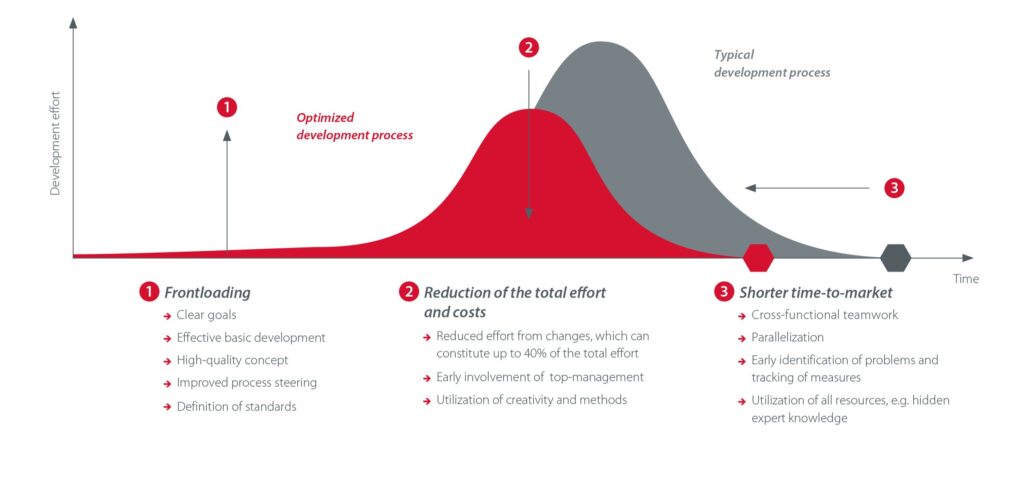Efficient product development eliminates unnecessary processes
Although most companies have formal product development processes (PEP) in place, in practice they are usually not consistently applied. However, even with sophisticated planning and design methodology, a significant percentage of total costs and project durations are caused by change efforts, especially in large projects.
The holistic TARGUS approach of Efficient Product Development starts with the existing structures and analyzes in detail the previous process steps in the essential areas of product development:
- Requirements management
- Product development processes
- Change management
In addition, general topics such as project management and resource management are evaluated.
The results, which are agreed upon with all stakeholders, serve as a basis for optimization. Some key elements that ensure the success of a development process are early, precise mapping of (customer) requirements and formulation of clear design guard rails, introduction of frontloading, i.e. increasing planning efforts in the early concept phase of product development, minimizing unplanned activities, and rapid identification of change requirements and early countermeasures.
Transparency, early identification of change requirements and rapid action increase flexibility in product development and lead to significant cost savings. Based on the company-specific requirements in the product development process, our experienced consultants develop customized approaches for efficient product development.
With the development of a new process the implementation only starts. Training and pilot projects lead to a better acceptance and living of the methods, so that the actual goals are reached. TARGUS supports the implementation of the new product development process with reviews in order to be able to refine it if necessary.

Typical Results of Efficient Product Development
- Cost reductions in the product development process of up to 20%
- Reduction of product development efforts
- Reduction of change costs
- Higher commitment for customers and subcontractors
- Faster time-to-market process and higher innovative power
